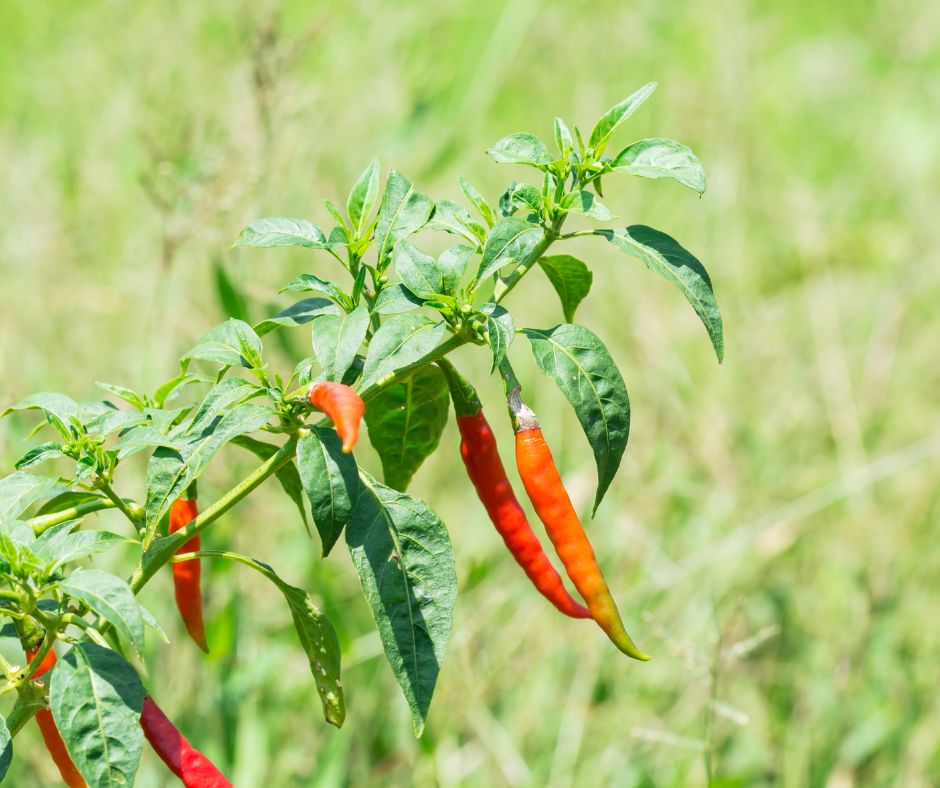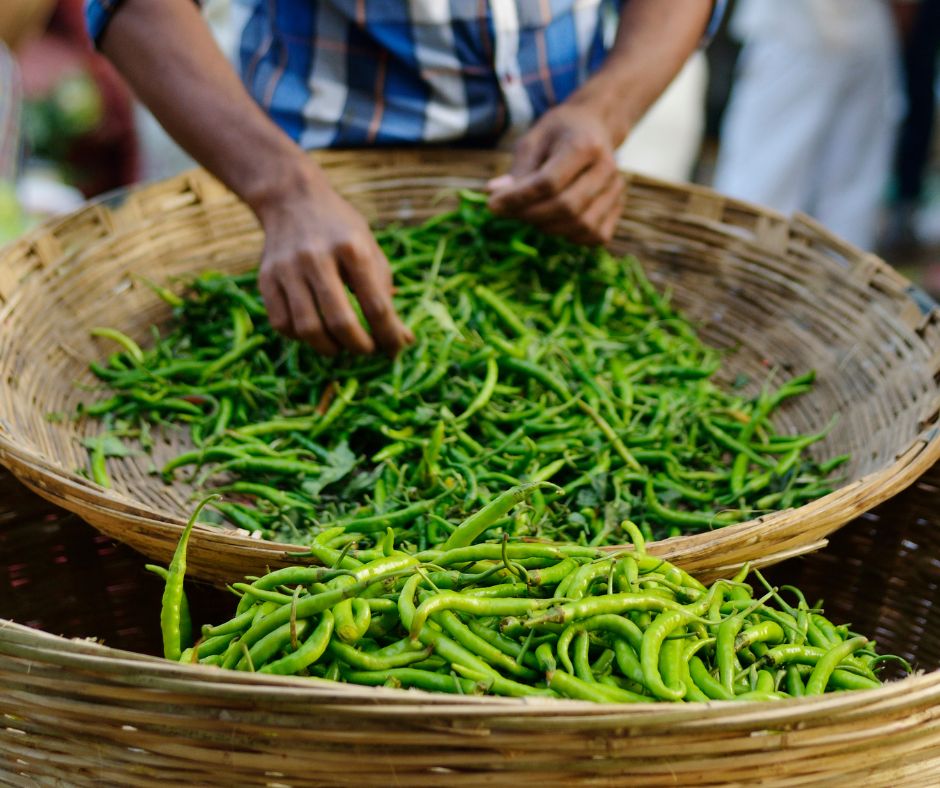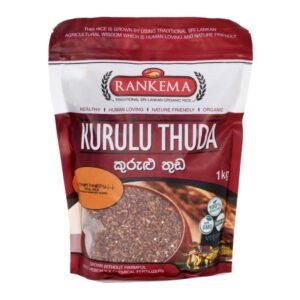
Table of Contents
An introduction to Red Chilly
Red Chilly is one of the most famous spices in the world. They serve mainly two purposes. One is to give the dish, the color and the second is to give a dish the flavoring and heat. Chilly fruit when ripened and dried becomes Red Chilly, which is further grounded to form Red Chilly powder. In India and Sri Lanka, it was so widely adapted that it is used in their entire cuisine. Furthermore, it is fundamental in South-Eastern Asian cooking.
The origin and extension

Origins of cultivating Chilly are traced to east-central Mexico some 6,000 years ago, although there are controversies about that tale of origin. The wide expansion began when Christopher Columbus encountered Chilies on his first voyage in 1492 to the Caribbeans. Afterward, the Chilly plant was then taken by the Spaniards to the hot humid areas of the Mediterranean followed by its spread to Africa, India, Sri Lanka, and the Far East.
The nutrition and health benefits of Red Chilly
Chilly contains a high amount of vitamin C and other vitamins such as vitamin A, vitamin B6, and vitamin K and minerals like calcium, magnesium, folate, potassium, thiamin, iron, copper, etc. Chilly peppers are discovered to be, increasing lipid catabolism, which could protect against hypercholesterolemia and obesity, reducing the risks of hypertension, type 2 diabetes, and cardiovascular diseases.

Research in China provided the most convincing evidence that there is an inverse relationship between chili pepper consumption and mortality from all causes such as cancer, respiratory and cardiovascular disease showing the positive effects on chronic non-communicable diseases. Thus, Red Chilly may be a beneficial component of the diet. Also in 2015, a study showed that people with spicy diets tend to live longer.
Important bioactive compound: Capsaicin
Capsaicin is the main bioactive compound in Chilly which is responsible for its pungent taste and various health benefits. Capsaicin has diverse uses in pharmaceuticals that are attributed to relief of pain, anti-arthritic, anti-bacterial, anti-inflammatory, anti-rhinitis, and analgesic properties.
Anti-microbial properties
The anti-microbial activity of spices, as highlighted by inhibitory effects against H. pylori and other bacteria and fungi, may alter the gut microbiota and influence various metabolic diseases. Their capsaicin and other chemicals, it turns out, can slow or stop microbial growth. Outside the body, spices help keep dangerous germs from growing on food.
Side effects of Red Chilly
The burning sensation triggered by Chilly consumption may cause stomach pain and diarrhea and intestinal distress in some people. The symptoms may include abdominal pain, a burning sensation in your gut, cramps, and painful diarrhea. This is more common in people with irritable bowel syndrome (IBS) or this is simply a cause of excessive consumption of red chilies.
Red Chilly has been blamed for causing or exacerbating symptoms of anal pathologies like anal fissures and hemorrhoids are another negative aspect of Red Chilly consumption yet it is only with the patient with anal fissures or hemorrhoids. On the other, red chilies consumed in excess can cause internal inflammation which results in peptic ulcers as well.
Side effects of Red Chilly powder
Regarding red chili powder, the major side effects are similar to the consumption of red chilies. Additionally, adulterants in the powder may cause more unwanted damage to one’s health and economical losses as well. Apart from that, consuming more Red Chilly powder can also make you feel nauseated and may cause mouth blisters and Asthma because it may contain ingredients that are dangerous to those with asthma or respiratory diseases. Premature birth can also occur as it can cause respiratory diseases in the baby.
Additionally, there may be a risk of developing ulcers which are mainly caused by aflatoxin which is a harmful toxic built by unwanted growth of some fungal species. This growth of fungi is mainly due to bad management practices of the red chilies or Red Chilly powder. So, even if chili peppers are proven to provide health benefits, it would not do much by consuming fast-food pizza several times a week. For it doesn’t become a healthy diet just by adding extra chili flakes.
Green Chilies on health

There is another kind of common household Chilly as green chilies. Born as green, when they are dried, they turn red as they lose all the water content and become more pungent. When chilies dry up and turn red, they lose some nutrients. Thus,
Green chilies are healthier as compared to Red Chilly/Red Chilly powder. Yet, the difference is so minute, since the amount consumed should be kept at low levels to evade unwanted side effects.
Side effects of Green Chilies
Regarding the side effects of consuming Green Chilies, they are more or less similar to the side effects of red Chilies. Patients suffering from piles should avoid consuming Green Chilies. Excessive intake of Green Chilies can cause stomach irritation and diarrhea, ulcers, stomach irritation, and dizziness. Diabetes becomes lower than normal due to excessive intake of Green Chilies. Therefore, diabetic patients who are taking diabetes medicines should not consume more Green Chilies. But consumption of 2-3 Chilies per day might keep the harms at bay.
Scientists continue to uncover the secret powers of chilly, so, people will keep spicing up their soups, stews, stir-fries, and other favorite dishes. So, next time you see a Chilly on a plate, take a deep breath, then take a bite but make sure never to go overboard.
What’s the difference between Ceylon Red Chilies and other red chilies?
Ceylon Red Chilies, also known as Sri Lankan Red Chilies, are known for their vibrant red color and a distinct flavor profile. Compared to some popular varieties like jalapeños or cayenne peppers, they offer a balanced heat. They have a fruity aroma with a subtle smoky undertone.
How hot are Ceylon Red Chilies?
They fall on the medium-heat spectrum, typically ranging between 10,000 to 50,000 Scoville Heat Units (SHU). This makes them spicier than jalapeños (2,500-8,000 SHU) but milder than habaneros (100,000-350,000 SHU).
Where can I buy Ceylon Red Chilies in the US?
Finding fresh Ceylon Red Chilies might be challenging in most grocery stores. However, you have options:
Online retailers: Several online marketplaces offer dried Ceylon Red Chilies directly from Sri Lankan vendors.
Specialty stores: Stores specializing in international foods or hot peppers might carry them.
Asian or Latin grocery stores: These stores may have a wider variety of dried chilies, and you might find similar substitutes.
What forms are Ceylon Red Chilies available in?
Ceylon Authentic typically offers dried Ceylon Red Chilies. You might also find them in:
Powdered form: Great for adding a quick kick to dishes.
Flakes: Offer a nice visual element and controlled heat level.
How can I store Ceylon Red Chilies?
Store whole dried chilies in an airtight container in a cool, dark place. Ground chilies lose potency faster, so store them in the refrigerator for up to 6 months.
What are some ways to use Ceylon Red Chilies in cooking?
Their versatility makes them perfect for various dishes:
Curries and stews: Add depth and heat to Sri Lankan curries or other South Asian dishes.
Stir-fries and noodle dishes: A fiery kick for Asian-inspired meals.
Spicy marinades: Give meats and vegetables a flavorful heat boost.
Salsas and hot sauces: Perfect for creating homemade condiments with a unique twist.
Can I substitute Ceylon Red Chilies with other chilies?
Yes, depending on your desired heat level:
For a similar heat level: Cayenne pepper or guajillo peppers can work.
For a milder option: Paprika or ancho chilies offer a smoky flavor without the intense heat.
For a hotter option: Jalapeños or serrano peppers will increase the spice factor.
Are Ceylon Red Chilies healthy?
Like most chilies, they are a good source of vitamins A and C, and capsaicin, which has potential health benefits. However, consume them in moderation as excessive intake can irritate your stomach.
What if I accidentally touch my eye after handling chilies?
Wash your hands thoroughly with milk to help neutralize the capsaicin. Avoid rubbing your eyes, and consult a doctor if the irritation persists.
How can I learn more about Sri Lankan cuisine and spices?
Explore online resources, cookbooks focusing on Sri Lankan food, or watch cooking videos featuring Sri Lankan chefs. You can also visit Sri Lankan restaurants in your area to experience the flavors firsthand.




